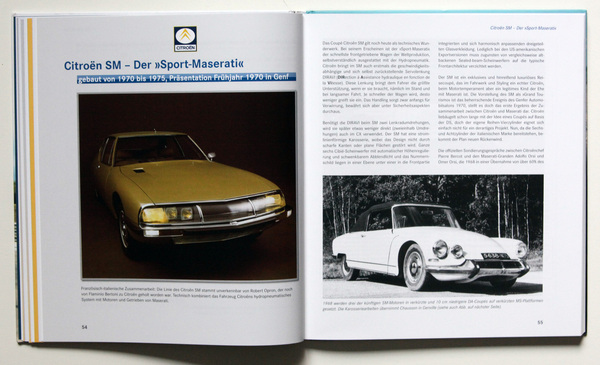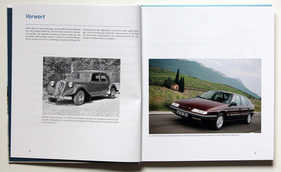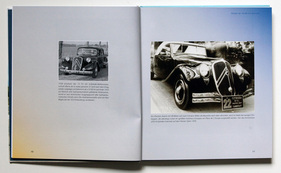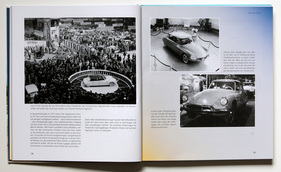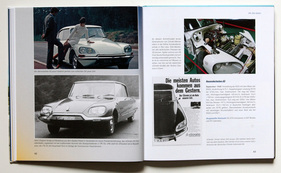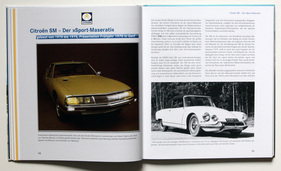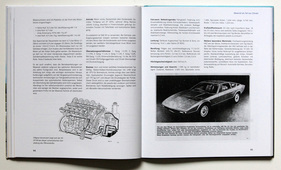When you think of Citroën, most people think of the DS first. And then, of course, the Duck, i.e. the 2 CV. But of course the history of Citroën is much richer. In fact, it is so extensive that a single book would hardly be enough to cover it all. And that is why there are also many books that focus on the DS/ID models or the 2 CV, for example.

Immo Mikloweit has now taken a different approach to the subject of Citroën, namely by focusing on the "big" models. 2 CV, Diane, Visa and Co, but he even leaves the GS or the BX on the side. However, this still leaves seven important models, actually eight. Can you do them justice with 208 pages?
Traction Avant as an introduction
Most Traction Avants had four-cylinder engines, so they were not really "big" Citroëns. But there was also the Citroën 15 Six H, and with its hydropneumatics it was the pioneer for the goddess. The French even presented an eight-cylinder version in Paris in 1935, but this model did not go into series production.
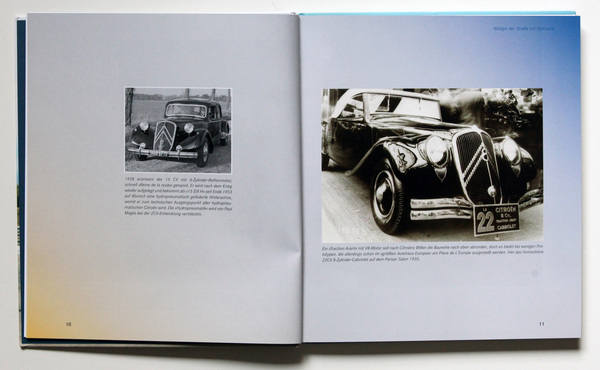
Eight pages are hardly enough for a thorough treatment of the 15 Six H, especially as the pictures are numerous and large. Let's turn the page
The goddess over 38 pages
The chapter on the Citroën DS is more extensive. There is space here for brochure extracts, factory photos, technical improvements and, of course, the development history, but there are also around two decades to summarize.

It's nice to see that one or two individual items can also be found in the illustrations.
The sporty SM on 39 pages
Although it is significantly rarer and more exotic than the DS, the SM was given even more space. However, the coupé resulting from the marriage with Maserati also deserves this and perhaps this section of the book is the main argument for the entire volume.

There is a lot to learn, even an argumentation aid for sales is illustrated in parts. Prototypes are just as much a part of the book as American versions and rally versions of the SM Présidentielle. And there is even a reference to the Ligier JS2.
14 pages about Maserati
As is well known, Citroën took over the sports car manufacturer Maserati in 1968. This resulted not only in a shared engine but also a shared parts policy, which led to significant contributions from the French to Italian sports cars. The joint models are described in detail.
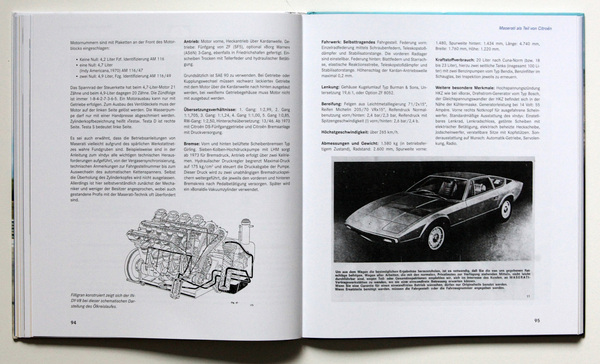
The image material is not completely convincing, especially in this section, but the historian will be pleased that the Quattroporte II is also mentioned.
42 pages for the CX
The fact that the Citroën CX outshines the DS in terms of the number of pages may have something to do with the author Immo Mikloweit's past. He was an employee of the German Citroën headquarters in Cologne-Porz for several decades. He must have seen the CX himself and therefore had a lot of archive material. The story is also extensively revisited.

It is charming that technical developments are partly explained with the advertising motifs used at the time.
The CX is followed by the XM
The fact that the XM came from a different designer than the CX was obvious at first glance.

Technically, there were significantly more connections. However, as the XM is often treated somewhat neglected, it is nice to find 16 pages about this era, which actually ends with the C6 Lignage concept car, which only later leads to a proper successor.
C5 and C6
For the more modern vehicle generations C5, C6 and C5 II, a total of 34 pages will have to suffice.

Nevertheless, you learn a lot that you have probably long forgotten, even though these cars are only 20, in some cases even less than 10 years old.
Vive la difference?
Anyone working their way through the book will be a little surprised that it somehow lacks a consistent structure. Sometimes you get the feeling that pictures have simply been strung together, elsewhere the level of detail on model years is astonishing. The chapters do not appear to have been cast from the same mold, perhaps they were even created separately.
An appendix with summarized technical data, production figures and prices is missing, as is an index.
Nevertheless, the generously designed book has its charm. After all, perfection was not necessarily a characteristic of the Citroën models, so the book can be forgiven for one or two slip-ups.

Anyone who does not yet have a book on the Citroën brand in their library will find plenty of interesting information and attractive images in Mikloweit's 208-page book. Anyone who already has a book on the DS will certainly find the other chapters useful. And books on the newer models are not exactly a dime a dozen.
Bibliographical details
- Title: The great Citroën - Avant-garde from France: Traction Avant 15 SIX H - DS - SM - CX - XM - C5 - C6
- Author: Immo Mikloweit
- Language: German
- Publisher: Motorbuch Verlag
- Edition: 1st edition October 2020
- Format: Hardcover, 23 x 26.5 cm
- Scope: 208 pages, 250 illustrations
- ISBN: 978-3-613-04318-3
- Price: EUR 34.90
- Buy/order: Online at amazon.de, online at Motorbuch Verlag or in relevant bookstores





